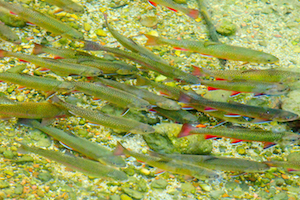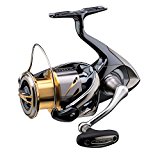Arctic Charr Feeding

The Arctic Charr’s eating habits depend primarily upon what food is available.
Like the brown trout, which despite its name is also a Charr, they’ll eat insect larvae, small mussels, zooplankton and fish eggs.
Arctic Charr themselves, are a major food source for other large family members, fish-eating trout. However, we don’t know if the Arctic Charr will feed on its own young.
Record Arctic Charr
Where food is plentiful, the Arctic Charr can grow to record weight. The current International Fish and Game (IGFA) record for a charr caught on tackle is 15 kilograms/32 pounds 9 ounces The fish was landed in the Tree River, Nunavut Territory, Canada in 1981.
While the Arctic Char prefers insects, mollusks and small fish, it will also go after ninespine sticklebacks.
Winter Feeding
The Arctic Charr often doesn’t eat in the winter when its metabolic rate slows in tune with a cooling environment, entering a semi sleeping state. However that is not to say that can’t be caught. Arctic Charr can be coaxed into striking at a lure.
However most Arctic Charr pass the winter barely moving and without eating. During this time it lives on the fat it’s accumulated during the summer. As such, growth is limited during the cold months and greatest when at sea. Those fish that are not able to stock up enough on their fat reserves are the most likely to bite. They’ll also strike if the lure or bait gets too close to them.
An interesting note about the sea-going char. Unlike other anadromous fish, such as salmon, Arctic Charr don’t spend their life in salt water, returning to fresh water only to spawn.
They will come back to the river in which they were born to spend every winter, whether or not they spawn.


